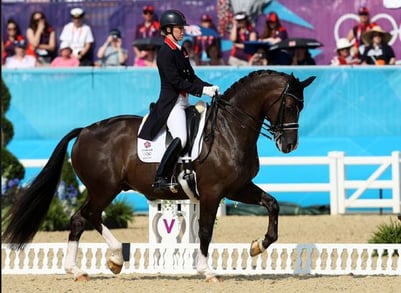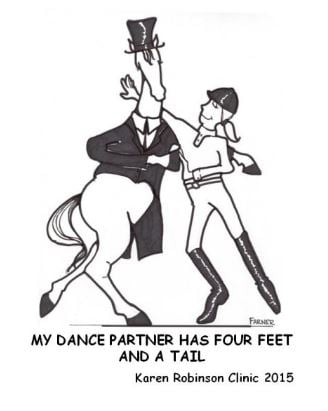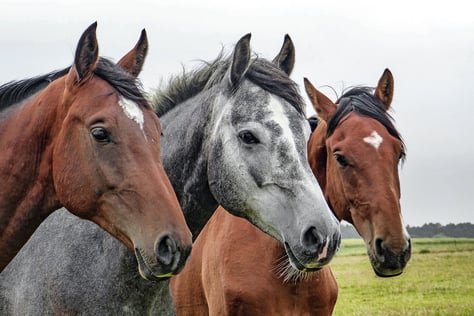It's sometimes called “horse ballet” by those that don't understand the sport. But actually, they are not too far off. The power and elegance of dressage combined with the beauty of appropriate music can turn our sport into art – like figure skating or, yes, even ballet.
The Dressage Grand Prix Freestyle is coming up in the 2012 London Olympics and if there’s one thing you can watch, this would be it. Unlike the dressage tests like the Grand Prix and Grand Prix Special, every freestyle will be different. However, jus t like figure skating, all freestyles must contain certain movements to show the level of training of the horse and rider. To see a copy of the Grand Prix Freestyle score sheet, click HERE.
If you watch and listen carefully, you’ll notice that different riders use different types of music, based on their horse. A rider with a big, powerful horse may use music that is more majestic. A rider with a smaller, finer-boned horse may use music that is lighter and “airy.” The choice of music is probably the most important part of the freestyle, even more important than the choreography. In fact, there is a specific score for the music and the interpretation. To evaluate your horse’s way of going to different music, riders will often video having their horse ridden at all the gaits and movements they will use. They may even put a different color boot or polo wrap on one of the front legs to help visually see the cadence of foot falls and how it matches up to the music. After the video is made, you can try different types of music and see what best fits your horse’s way of moving. This is often the most difficult thing for new freestyle choreographers to embrace. They have a favorite piece of music that they desperately want to ride to. However, it may not be the best music to show off your horse and choreography. The music rarely, if ever, contains vocals as they can be too distracting when watching the artistic interpretation of horse and music. It is also rare for one piece of music to fit your whole freestyle, so be prepared to use different types of music, though you’ll notice they are usually in the same genre, e.g. all classical, all show tunes, all Big Band.
 At the Grand Prix level, some of the riders have music choreographed especially for their dressage freestyle. This is the case for Charlotte Dujardin who rode, at the London Olympic World Cup, received a record 94.3% for her freestyle with music composed by Tom Hunt. To see that awesome ride, click HERE.
At the Grand Prix level, some of the riders have music choreographed especially for their dressage freestyle. This is the case for Charlotte Dujardin who rode, at the London Olympic World Cup, received a record 94.3% for her freestyle with music composed by Tom Hunt. To see that awesome ride, click HERE.
Here’s some expert advice from Tom Hunt on designing your own freestyle:
“My advice to anyone starting out would be to find music that really suits the personality and characteristics of your horse. Once you have a style of music that you like, whether it’s classical or pop, it is important to try and create a theme for the freestyle. That can be a musical theme that is repeated throughout the routine or music from a show soundtrack for example. It’s important that there’s a connection linking the music choices together so that the freestyle makes sense as a whole piece. This will also make it easier for audiences to stay engaged with the overall experience of the freestyle.
“Getting to grips with the differences in tempo of your horse’s paces is crucial. Make a video of your floorplan and, with a metronome, take some time to work out the BPM (Beats Per Minute) of each pace and work with music choices that complement the horse’s tempo, style and rhythm. If you have a big horse with powerful movement it is important to use music that emphasizes these characteristics.
“Another good piece of advice is to arrange the music to highlight the changes in the floorplan / choreography. This may sound obvious but it can really help a rider stay on the beat if they know where they need to be at any given point in the music. Understanding the phrasing of music can help you with this aspect when it comes to putting the music to your floorplan.”
While anyone can create and ride a musical freestyle, the United States Dressage Federation recommends that you ride at a level BELOW what you are currently showing in regular dressage. For example, if you are showing at 2nd Level, you should create a freestyle for 1st Level or Training Level.
So for all you frustrated “So You Think You Can Dance” dancers or choreographers, here’s your chance for you and your partner to show off!

Photo credits:
www.dressage-news.com
www. MichiganDressageClinics.com



